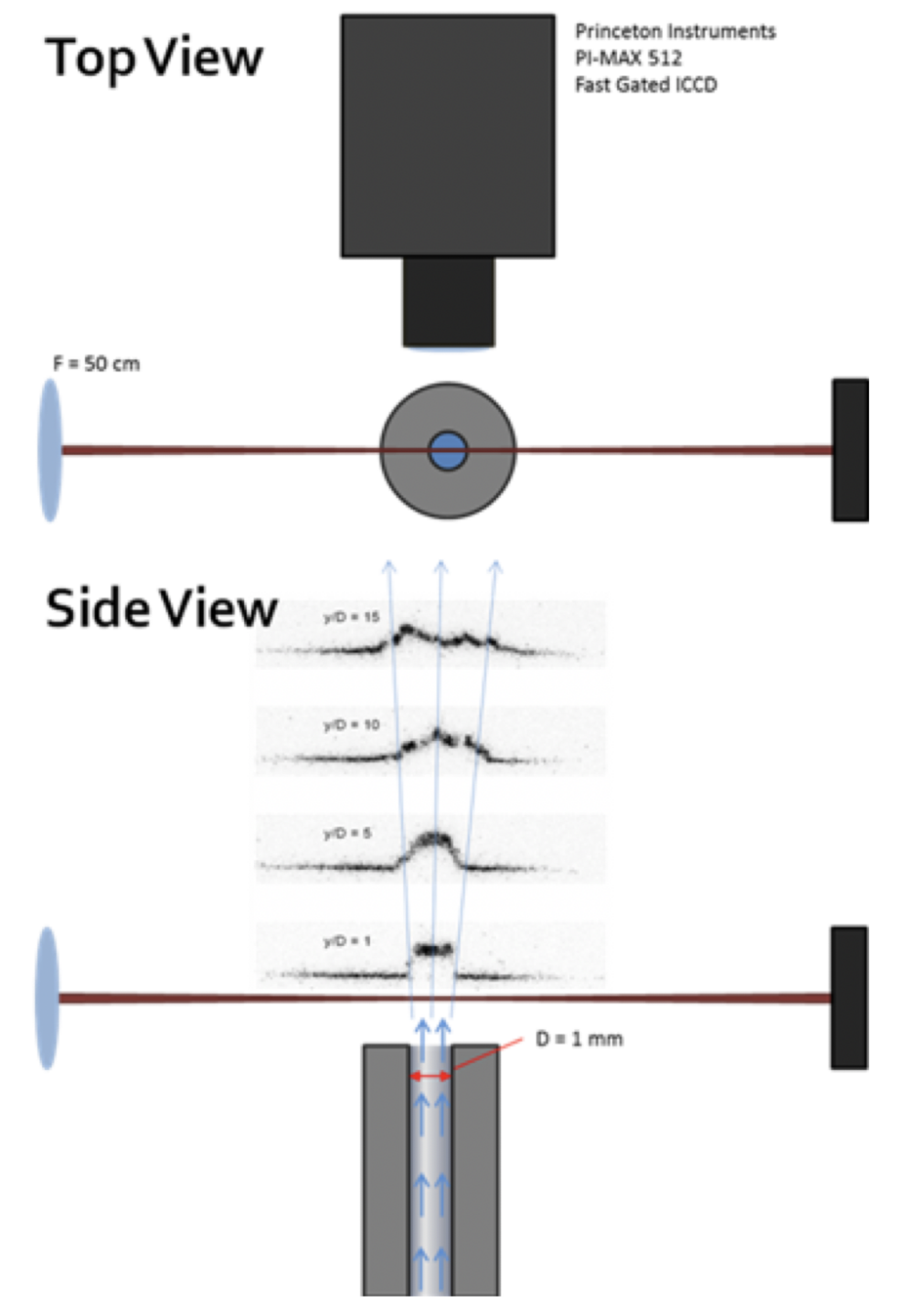Femtosecond Laser Electronic Excitation Tagging
Advanced Diagnostics Navigation
- Atomic and molecular species, positive and negative ions
- Laser-Induced Fluorescence (LIF) and Two-Photon Absorption LIF (TALIF)
- Radar Resonant Enhanced Multi-Photon Ionization (Radar REMPI)
- Characterization of plasma, chemical composition and dynamic behavior
- Electron velocity distribution function, gas flow velocity and temperature
- Electric field and space potential
- Nanoparticle Diagnostics
- Surface Diagnostics
Femtosecond Laser Electronic Excitation Tagging (FLEET)

FLEET [1] is a new capability which allows flow velocity mapping by tagging and following lines and patterns in air flows without seeding. The FLEET technique is based on turning nitrogen molecules along the path of a laser beam into long-lifetime glowing tracers whose motion is tracked in time using a high speed imaging system. In this way, tagged lines and patterns can be followed in nitrogen and air flow in real time, without seeding the flow with either particles or foreign gases. A single femtosecond laser is used for multiphoton dissociation of molecular nitrogen. Subsequent atomic recombination, which takes place microseconds later, produces excited nitrogen molecules as fluorescent tracers which can be imaged with a single time-gated intensified camera. Real-time flow velocity measurements are obtained by measuring the displacement of a tagged line over a known time interval, which can range from few to hundreds of microseconds. The potential to capture these data at kilohertz rates brings a new capability for high speed flow dynamic measurements. Using the Solstice fs laser system and a high-speed intensified camera, kHz FLEET allows for mapping an air plasma jet and monitoring the dynamics of the gas mixture. Collisions between excited Ar and nitrogen allows for enhances luminescence and provides a way to spatially resolve the mixtures in the plasma jet. We have demonstrated FLEET at 1 Torr in a large facility hypersonic tunnel using single shot measurements at 1kHz [2]. We are also using FLEET to image the flows in low temperature plasmas such as plasma jets.
- J. B. Michael, M.R. Edwards, A. Dogariu, and R. B. Miles, “Femtosecond laser electronic excitation tagging for quantitative velocity imaging in air” Appl Opt, 50, #26, pp. 5158-5162 (2011).
- L. E. Dogariu, A. Dogariu, R. B. Miles, M. S. Smith, and E. C. Marineau, “Femtosecond Laser Electronic Excitation Tagging Velocimetry in a Large-Scale Hypersonic Facility,” AIAA Journal 57, 4725 (2019).
 This capability is located at the Princeton University Dept. of Mechanical and Aerospace Engineering.
This capability is located at the Princeton University Dept. of Mechanical and Aerospace Engineering.
